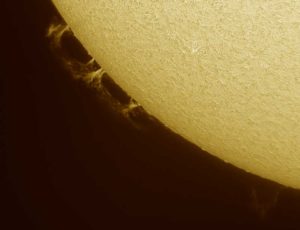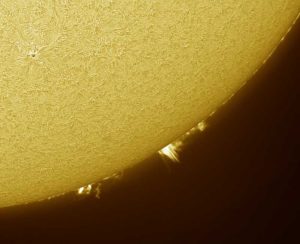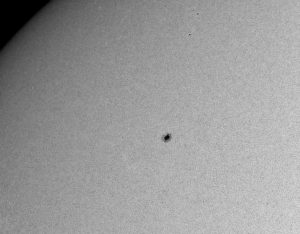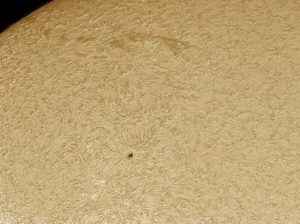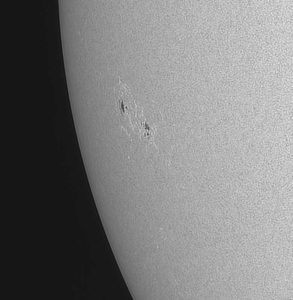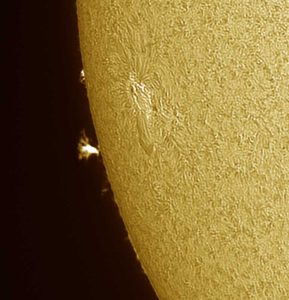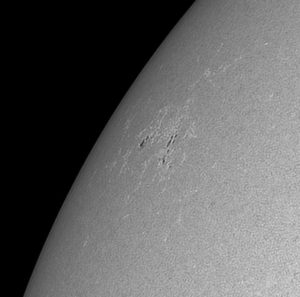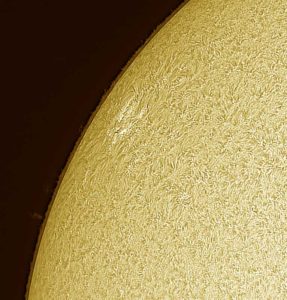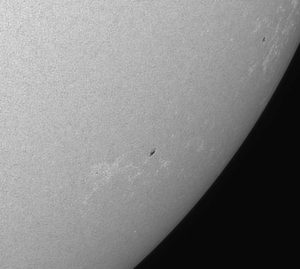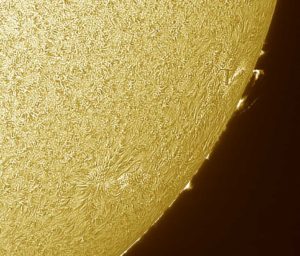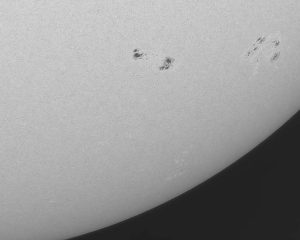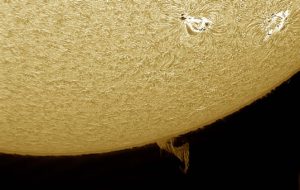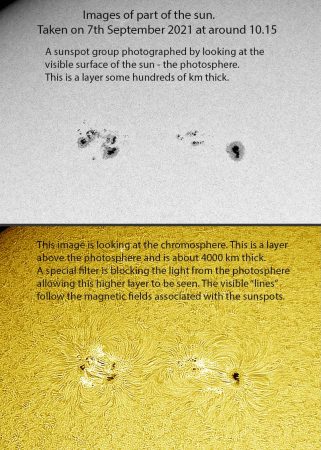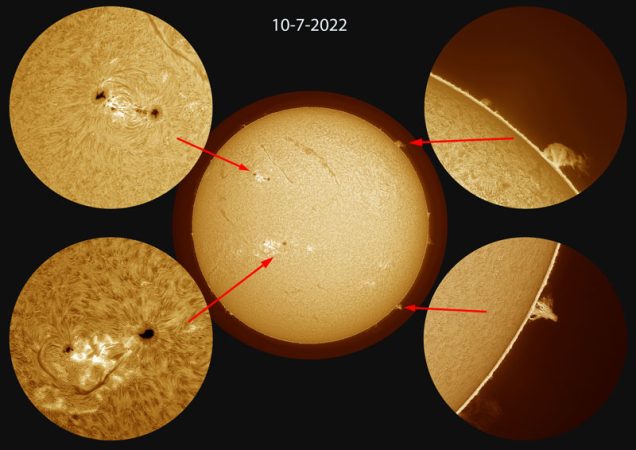To see the images large just click on the image. There is a cross icon top right to then revert to the smaller size. This applies to all the images on this page.
A second sunspot imaged on 22nd July 2021.
The image is shown in white light and h-alpha light. In the h-alpha light the spicules are visible as a “fringe” around the disc. They can reach several thousand kilometers in height before collapsing and fading away. This makes sense with the solar ruler measuring the printout. It is about half a division on the ruler which represents 5000km.
A sunspot area imaged on 5th Sept 2021.
The image is shown in white light and h-alpha light. The captions on the image illustrate the differences between the h-alpha and white light.
The granulation on the image in white light changes over a few minutes, whereas the detail on the h-alpha lasts a lot longer. Experiments have been done to show this as a movie but these tests are not yet ready to publish.
The whole sun imaged on 10th July 2022.
Then an X5 barlow was used to create images of the interesting areas in close-up.
The images were processed in AutoStakkert and then imppg. The later enables the prominences and spicules to be made visible with the same image as the surface. this obviates two separate images with different exposure/gain and merging them in photoshop. The final image also looks more natural. The way of doing this is described on the imppg website.
